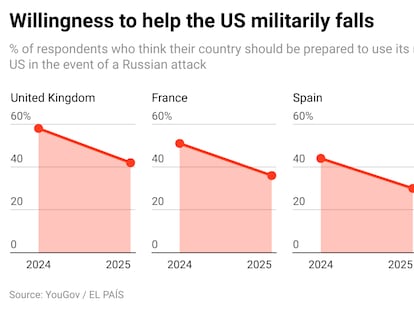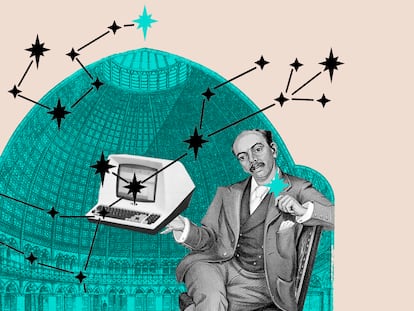Who makes a Nintendo? Globalization explained through the new Switch 2
The console exists thanks to a complex global network: designed in Japan, manufactured in Vietnam, and powered by a US-made processor. We took it apart piece by piece
In 1980, Nintendo was a Japanese toy company taking its first steps in the world of video games. That year, it created Nintendo of America to export its arcade machines to the United States, a modest venture that nearly failed. They ordered 3,000 arcade machines with a boring game that didn’t sell. The solution was to request a new title from Japan that could run on the unused hardware — and so, Donkey Kong was born. It became a hit, introduced the world to Mario, and marked the beginning of Nintendo’s global journey.
Four decades later, the company is launching the Switch 2. The new console is no longer just a product for Japan — it’s a global device, not even released in Japan first, but eagerly awaited by gamers worldwide. And in an era of trade wars, it’s not truly “Japanese” anymore: the console couldn’t be built without a complex network of companies and countries. We took a Switch apart to trace its origins...
If we wanted to completely take apart the Switch, we would have to trace hundreds of components and visit suppliers across three continents. Moreover, behind each part, we would find another chain with its own components, weaving an international network that grows like a fractal.
We can see this with the console’s chip.
The Switch 2 will use a processor from Nvidia (United States), the computing company that has become the third most valuable in the world thanks to AI. Rumors say it will be a Tegra model, which integrates audio and video blocks with the CPU and GPU — the “brains” that power the console.
It’s a chip that few companies could design. And that’s despite it being a 2021 model with 8-nanometer technology, from the penultimate generation. Today, the most advanced chips are designed by only about half a dozen companies: Nvidia, Apple, AMD, Qualcomm (U.S.), Samsung (South Korea), and HiSilicon (China).
Additionally, the designers themselves have dependencies. For example, Nvidia requires EDA tools, which are exclusive to companies like Cadence (U.S.) or Siemens (Germany), and architectures licensed by ARM (U.K.).
Once the design is finished, the most specialized step follows: chip manufacturing.
The Switch will be manufactured by Samsung (South Korea). There are few alternatives. Only two foundries produce the most advanced semiconductors, those at 5 nanometers or smaller: Samsung and TSMC (Taiwan). Chinese foundries, like SMIC, are advancing quickly but have not yet reached that level. This duopoly highlights how concentrated the sector is. (And it’s also another layer of this story: the tech war between powers. It’s no coincidence that Nvidia is banned from selling its most advanced technology to China, nor that TSMC is building factories in Arizona.)
And there’s more. Whether Samsung or TSMC manufactures the chips, both depend on ASML (Netherlands), the only company worldwide capable of producing extreme ultraviolet lithography machines. Without ASML, there are no modern chips. It is the ultimate bottleneck in the chip supply chain.
But the journey of the Switch chip isn’t over yet. Wafers — silicon discs containing hundreds of chips — will come out of Samsung’s foundries to be packaged and tested. This work could be done by Amkor (U.S.) at their plants in the Philippines. There, each chip is cut, connected to the pins that will allow it to be mounted, and sealed in its protective casing.
Finally, the semiconductors travel to Vietnam. There, Foxconn assembles them with the rest of the components: the Taiwanese screen, the Chinese battery, the South Korean memory, and so on. Each chip will have traveled more than 15,000 miles — halfway around the world— before a player in Madrid presses “Start.”
This 15,000-mile network is exactly what Donald Trump is threatening to unravel. On the same day Switch 2 was announced, April 2, the U.S. president was celebrating his so-called “Liberation Day” by declaring a trade war against his partners. Tariffs have come and gone amid Trump’s characteristic chaos: they have been imposed, paused, reduced, and repealed.
Nintendo clearly illustrates the consequences of Trump’s trade war. The company raised the prices of accessories, but maintained the price of the console... for now. It’s in a delicate position since early sales are crucial to building a critical mass. As Nintendo president Shuntaro Furukawa explained: “Our priority is [...] to rapidly expand the install base of our new hardware.” But he warned: “If the assumptions on tariffs change, we will consider what kind of price adjustments would be appropriate.”
Trump’s tariffs seem to chase an impossible goal: “bringing back” all manufacturing to the United States. But this goal is up against a stubborn reality. According to The Wall Street Journal, assembling an iPhone in China costs $30; doing it in the United States, $300. Manufacturing every component from scratch? “A bajillion dollars. And maybe a magic wand,” says analyst Wayne Lam.
Because the Switch shows it’s not just a matter of cost. TSMC and Samsung may have started out as cheap labor, but today they monopolize the most advanced technology. That’s decades of knowledge that won’t be easily replicated. The same goes for ASML and its lithography machines.
This specialization translates into efficiency. That’s why global trade has increased twelvefold since 1960. Contrary to what Trump believes, trade is not a zero-sum game where one country only wins if others lose. The studies are conclusive: countries that trade more are richer, more productive, and more innovative. Every component of the Switch tells that story: the world has become specialized and interconnected. Breaking up that network will be difficult and very expensive.
Nintendo players also become global
Nintendo’s universality isn’t just in its supply chain: it’s also demonstrated by its users. Its consoles have entertained four generations: Generation X who grew up with the NES, millennials with the Game Boy, Generation Z with the Wii, and now the Alphas who are discovering Mario with the same excitement as their parents.
Nintendo has the most diverse player profile in the industry. As analyst Andrew Szymanski explains: “It’s not for hardcore gamers, but it reaches broader demographics than any other platform.”
This is evident in the data. An Ipsos study in the U.K. found as many women as men playing on the Switch. And contrary to stereotype, it’s not a children’s console: according to Nintendo data, twenty-somethings are the largest group of gamers, outnumbering children and teenagers two to one. There are also more thirty-somethings than those under 18.
The success is also geographically universal. In 2024, the Americas accounted for 44% of Switch sales, followed by Europe (25%) and Japan (24%). Nintendo is no longer a company that exports from Japan: it is truly global.
Another testament to Nintendo’s global reach is the diversity of game developers creating titles for its consoles: studios from across the globe bring their creations to this platform.
Among the 50 highest-rated Switch games on Metacritic, a map of worldwide talent emerges: 22 Japanese titles dominate the list, including both Zelda games in the top five. However, they share space with U.S. hits like Portal and Metroid Prime, as well as surprises such as Divinity (Belgium), Ori and the Will of the Wisps (Austria), and Celeste (Canada).
The wide range of developers is striking. Alongside industry giants like Nintendo, independent studios also shine: Hades from Supergiant Games, Undertale, created solely by Toby Fox, and Hollow Knight from Team Cherry, a team of just two people. Spain is represented by Neva, developed by the Barcelona-based Nomada Studio, which has made a mark on the global market with its distinctive artistic style. The Switch serves as a showcase where even a solo developer can compete with multimillion-dollar franchises. This is globalization at its most hopeful: talent truly can come from anywhere.
Nintendo’s global reach has been a constant for 30 years — and has even accelerated. The Game Boy took 16 years (1989–2005) to sell 118 million units. Then the Nintendo DS raised the bar by selling 154 million portable consoles in just eight years (2005–2013). Despite being more expensive and ambitious, the original Switch has already matched — and will likely surpass — that milestone: 152 million consoles sold in seven years (2017–2024).
Analysts believe Nintendo will sell 15 million consoles before the end of the year. One of its games will be Donkey Kong Bananza, featuring the same ape that saved Nintendo of America 45 years ago. He’s no longer a 16-pixel Japanese sprite but a fully 3D gorilla, known worldwide and brought to life using cutting-edge technology from multiple countries. Nintendo remains Japanese. And American. And Taiwanese. And global.
Sign up for our weekly newsletter to get more English-language news coverage from EL PAÍS USA Edition

